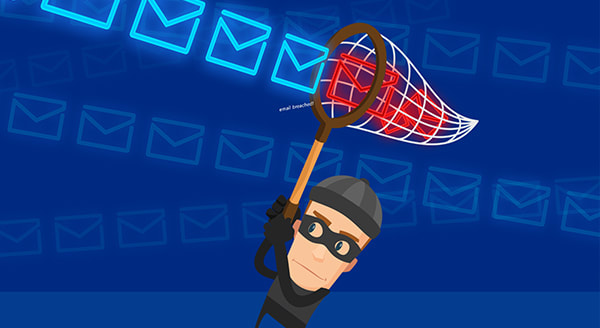|
You’ve thought it before: “that won’t happen to me.” It’s how humans get through most of their days without crippling fear. But when it comes to your business and its cybersecurity, this kind of blithe naïveté can prove costly. It’s estimated that 46% of users lose data each year. Yet businesses may not invest in proactive data backup. They think data loss won’t impact them or don’t know how to back up in the first place.
Still, backup is more affordable and accessible than data recovery after the fact. Any business in any industry is at risk of a data breach. It can come from an unintentional human error on the inside. Maybe someone means to send a sensitive spreadsheet to a colleague and sends it “reply all.” Oh no! Members of the press and the public were on that email thread! Then, there are cybercriminals working diligently to attack vulnerable organizations. Sometimes they do it to obtain data they can sell, or they might install ransomware to charge you money to regain access to your data. They could also hack you to try to get to a bigger target in your supply chain. Bad guys’ motivation aside, a data breach will hurt your business. Suffering a data breach can lead to:
In short, it’s not worth the risk of paying for data recovery, data breaches or ransomware. You can invest a lot less upfront to protect your data. Prevent the Worst from HappeningKeeping your business safe from cyber scams and other risks is essential. Do it in advance. Take preventative measures to avoid the larger cost of cleaning up a cyber mess after it happens. Invest in a solution that will manage all your software and system updates. Keep your system up to date with patch management to close weaknesses criminals might exploit. You’ll also want to install a firewall to block any brute-force attacks made on your network. Secure any endpoints connecting to your network from outside the firewall, as well. If employees connect remotely using mobile devices, tablets, and laptops, this means you. Also, invest in data backup. Having your data backed up can help you avoid serious downtime and give you more control in a ransomware situation. Staying current on all the ways to protect your business from cybercrime can be overwhelming, but don't deny the problem. Yes, a data breach could happen to you, and it costs so much more to deal with after the fact. Be proactive by partnering with a managed service provider (MSP). For a fixed monthly cost, an MSP can take on your patch management and ensure data backups. We can help you maintain a high level of protection against threats. Contact us today at 262-515-9499. You would need to be new to the internet to be unaware of threats to cybersecurity. With Internet World Stats reporting that 69% of the world is now online, that naïveté is increasingly unlikely. But is your business doing all it can to prevent email breaches? We know better than to use “123456” or “letmein” as passwords, but the threat remains. No matter the industry, global businesses are always at risk. Scammers send emails and set up spoof domains to get employees to enter access credentials online. Or criminals simply buy leaked emails and passwords from a previous data breach.
Once they’ve gained access, they can easily hide their activity. Setting up a simple “forward all email” rule gives them access to business communications. They can also see what services you use from the emails you receive. For example, they can identify which payroll software your business uses. Then, they go to that site and say they “forgot the password.” The reset instructions go to the email they can already access. So, they follow the steps, delete the email, and take control of the account. Criminals will also impersonate you and send invoices to your vendors or customers. They might send an invoice that looks like your genuine ones, but they end up paying the crooks. These attacks are working for cybercriminals. So, don’t expect email breach attacks to go away any time soon. Instead, take action to reduce the risk of compromise. How to protect your businessEducating your employees is an important first step. You can take all the steps we outline next, but humans will remain your weakest link. You'll want to:
Put a password manager application in place so employees set more complicated passwords. Enable multi-factor authentication on all email accounts. This makes it so that having the stolen credentials isn’t enough. A bad actor may have the username and password, but they also need the user’s authenticating device. That’s less likely. Another important move is to limit access to functions and features online. Take a least-privilege access approach. This means users can perform assigned roles but can't access other applications. This can curtail the damage if one user’s credentials are exposed. Ongoing monitoring of technology for signs of suspicious activity is also key. Set up alerts, and track activity logs. Your business wants to be able to react quickly rather than finding out weeks later about a hack. Keep online attackers at bayCreate a business environment that prioritizes prevention and detection. Email scams aren’t going to slow soon. Instead, your business needs to take action to shore up its defenses. We can help! Contact our IT experts today at 262-515-9499. |
Tech Force BlogWe provide you with important, practical tips and insight for your technology and networks for both home and business. Archives
March 2024
Categories
All
|
Get in touch with us! |
See what our clients have to say...
Very pleased with Tech Force! We've been using Tech Force for over four years now. We've had a lot of different people do computer and IT stuff for us, but Tech Force is the first to come in and implement a plan. The plan was executed and we've had no problems. |
More Client Reviews
Read Our Customer Reviews |
We service Racine, Mount Pleasant, Sturtevant, Wind Point, Union Grove, Elmwood Park, Franksville, Caledonia, Kenosha, Somers, Pleasant Prairie, Bristol, Parkside, Oak Creek and Franklin, WI and surrounding areas. Copyright © 2009-2024 Tech Force Computer Service, LLC.



 RSS Feed
RSS Feed
